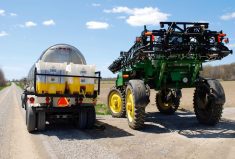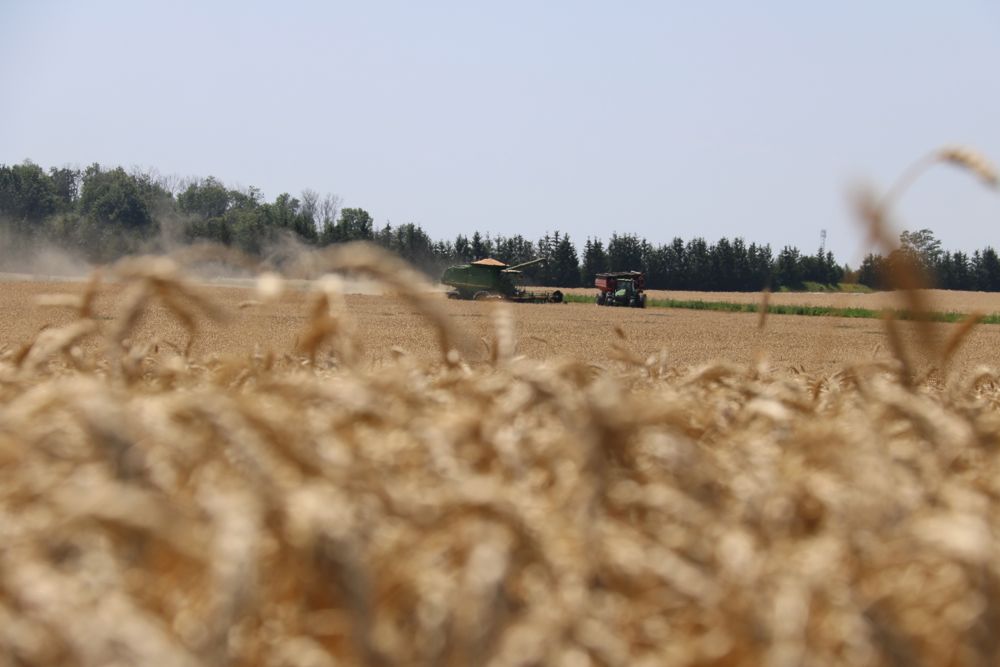Some refer to it with a smirk as “the weed that gets planted after soybeans.” Others see it as a mere rotation crop, something you have to plant whether you want to or not in order to break up disease and pest cycles.
However you have always thought about wheat’s role in your own operation, it may be about to change. Many in the industry are taking a fresh look at the market and the potential for the crop, and they’re seeing new opportunities.
On farm after farm for the past decade, wheat has been losing the battle for acres against corn and soybeans, and those crops can still seem to have all the momentum.
Read Also

Could crop sharing be a viable option for your farm?
Crop sharing could be a good option for young and beginning farmers.
It didn’t help that wheat became a political football in the 1980s, complete with government support programs such as Europe’s restitution payments (also known as export refunds) and the U.S. Enhanced Export Program (EEP). Those supports helped their farmers push exports overseas with the help of government-paid rebates.
On the surface, the Ontario Wheat Producers’ Marketing Board appeared to net the same $2.50 per bushel as Michigan growers, yet Washington’s subsidies topped up farm returns for American growers with an additional $1.40 per bushel that farmers north of the border never saw.
But the climate has changed, both figuratively and literally. New U.S. farm bills have leaned more towards corn and soybeans, while at the same time, genetically modified traits have been boosting yields of those crops, and simplifying their weed control.
“That meant a grower in South Dakota could successfully grow 40-bushel soybeans and 145-bushel corn versus just 50-bushel spring wheat, and that doesn’t do it anymore,” says Ken Nixon, a farmer from near Ilderton, Ont.
Nixon was on the executive with the Ontario wheat board in the 1990s, helping chart the sector’s transition out of mandatory pooling, so he has had an insider’s seat for watching the impact of government policy.
“A lot of those programs are also designed or encouraged by the processing sector, because they want to have large amounts of raw product to deal with and choose from,” says Nixon.
Nixon believes corn and soybean acres were also stimulated by the input sector, with the prospect of selling fertilizer and potash and keeping rail cars running. Then there is the rise of the ethanol industry, or as some see it, “the ethanol-corn industry.”
“It also has a lot to do with genetics, where we have soybeans that will run 40 bushel that can grow in Manitoba and North Dakota, whereas 15 years ago, that was wheat country, no ifs, ands or buts,” says Nixon, also citing 75- and 80-day hybrids for that part of the continent.
Corn has taken over the agricultural landscape, regaining its prominence in southwestern Ontario and gaining acres as you go east. Now, however, there are signs the boom may be nearing an end.
For several years, Cal Whewell of FC Stone in Perrysburg, Ohio, has been pointing to the rise of ethanol to explain corn’s resurgence, at least from a U.S. perspective. However, last February, he talked about corn’s imminent slide back into the upper-$3 to low-$4 range, pointing to a saturation level within the ethanol sector and a resulting lowering of demand. Thanks to the drought of 2012, prices went up, not down, but he still sees long-term fundamentals calling for a huge cut in corn and soybean prices. The drought has postponed those cuts, he says, not cancelled them.
Besides, wheat may offer more premium opportunities, says Archie Wilson, general manager with C&M Seeds in Palmerston, Ont.
Wilson sees potential where others see barriers. “In Ontario, we don’t have the cheapest land, we don’t have the laxest regulatory system, the cheapest tax system or the cheapest labour, and we don’t even have the best environment,” says Wilson. “What we do have is relative proximity to a lot of relatively affluent people who can afford to spend money on food.”
To some, it seems pie in the sky. But Wilson points to Manitoba growers who contract wheat to Warburton’s bakeries in the United Kingdom as proof there is plenty of room for Eastern Canada to establish its own quality-conscious value chains.
“How much would be a true premium?” Wilson asks, but then reframes the discussion. “It’s not a premium, it’s just a different market.
“I don’t think we’re going to save ourselves to prosperity in Ontario,” says Wilson, who believes Eastern Canada needs to get on top of more genetic research in wheat and get innovative with more production and marketing systems for producing and delivering those high-value traits. “I think the way we’re going to be successful is to manage to a higher level and produce better-quality end products for people, as opposed to producing the cheapest crop we can.”
It won’t necessarily be easy to get to Wilson’s view of the future. From a research perspective, there have been big strides in disease tolerance and the development of fungicide tools, and for Henry Olechowski, these kinds of advancements argue for continued research and breeding, not a “sit on your accomplishments” approach.
“I don’t think you want to stop and catch your breath,” says Olechowski, a researcher with Dow AgroSciences based in Nairn, Ont. “You’re always re-evaluating what you have and you’re always planning for the future. For us? We’re planning 10 years ahead.”
But what should be in that plan? With wheat, it’s more complex, meaning Olechowski can’t look at wheat as a single crop. He sees many classes, from soft reds and soft whites to hard reds, hard whites and durum, each with a specific end use.
“Corn is corn, but when you get into quality assessment and what the end-user wants, what quality parameters they want, that gets a little more difficult and the breeding of wheat is more difficult because it’s a hexaploid,” says Olechowski. “There’s a lot more challenge in breeding wheat and forecasting what their needs are 10 to 15 years out.”
But is wheat ready for genetic modification?
That’s a huge question, and a discussion that seems ready to jump to centre stage. The fact is, genetic modification in corn and soybeans has been part of the farming vocabulary for more than 15 years, with more positives than negatives. But wheat is a direct food ingredient, and toying with that plant is seen as a motherhood issue, like tampering with hockey or Tim Hortons coffee.
“As quickly as the technology or science is advancing for the breeders, the same could be said about the technology advancing for the manufacturers,” says Olechowski. “Some can use many different types of wheat to produce the same product. Others have a very tight spec sheet, and if you go outside of that, it won’t work in their current process.”
For Al Mussell, all potential markets are feasible. Exports, value added, even the end of the Canadian Wheat Board can create opportunity for those willing to explore the possibilities. Still, competition in the wheat sector is more intense than in corn, and much of this competition is on a global level.
“Certainly with the change in the Canadian Wheat Board, we’re going to see a much more transparent marketing of wheat,” says Mussell, a research associate with the George Morris Centre in Guelph, Ont.
Further into the future, Mussell sees a looming game changer — air seeder that will plant corn.
“Part of the reason wheat works into a rotation with corn and soybeans, quite frankly, is that we have a big bottleneck in the spring,” says Mussell. “That creates an opening for a fall-seeded crop. As the technology improves around the air seeder that will plant corn, there’ll be less of that bottleneck in the spring, and some people will say, ‘What’s the most profitable crop, what do I sell the most bushels per acre, relative to my cost base?’ — and wheat may be challenged in that environment.” CG















